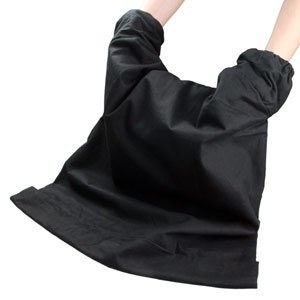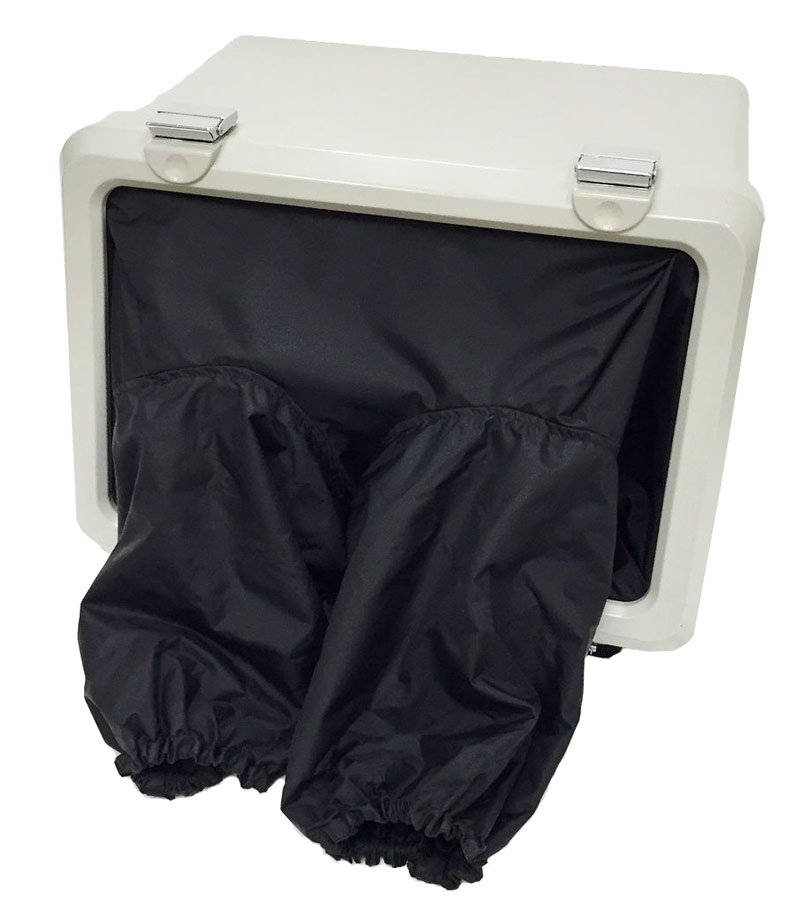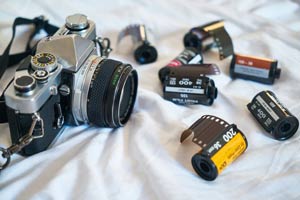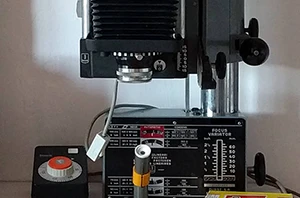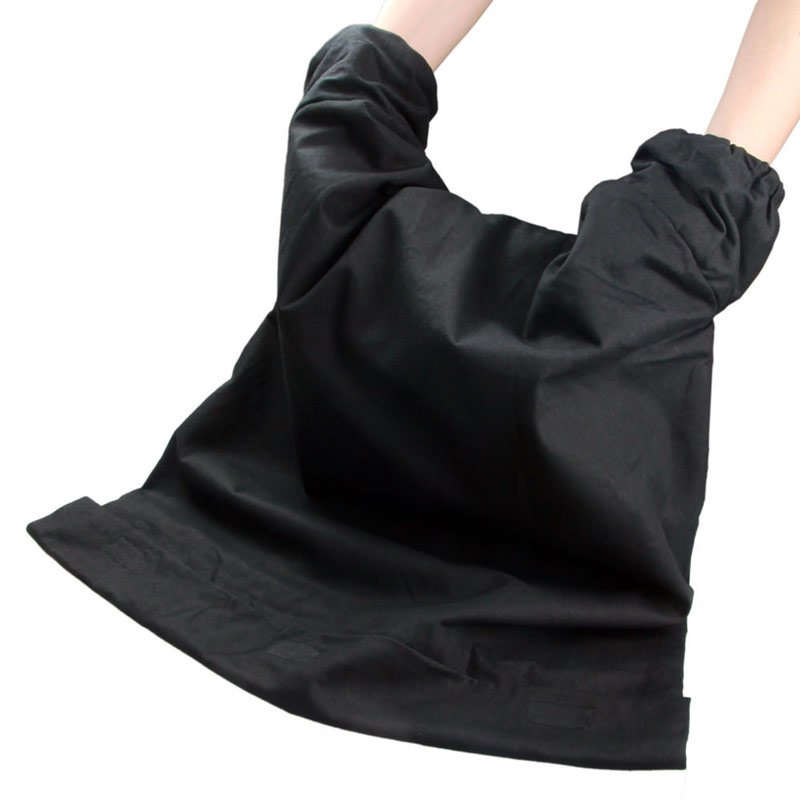
What is a film changing bag?
A film changing bag, also called a darkroom bag or simply changing bag, is a lightproof bag for handling photosensitive materials. Made out of opaque fabric, it has elastic cuffs allowing you to handle items inside the bag while maintaining complete darkness inside. Darkroom bags come in different sizes to accommodate various formats and tasks. Film changing bags are a staple in 35mm motion picture shooting where magazines have to be loaded on set.
Changing bags are usually made of two layers of fabric to provide completely opaque environment. The inner fabric of good quality chaging bags should be treated to prevent static electricity charge build-up. A static discharge can fog undeveloped film, in addition to making dust and lint stick to it. Better quality models are also made from breathable fabric to prevent your hands from sweating inside during tricky tasks.
How do you use a film changing bag?
Using a film changing bag is simple as long as you follow a certain order. As an example, let’s say you want to use your bag to load a stack of 4×5 film holders with fresh film. Even though you can use the bag in your lap, it’s easier if you lay it down on a clean, stable surface like a table or a desk.
Once the bag is on the table, open up the zip or flap that covers the large opening and lay your film and holders inside. Position them in such a way as to make your work by touch as simple as possible. Dust ot brush the outside of the holders and film box before puting them in the bag. As a general rule, keep the inside of your changing bag as clean and dust-free as possible.
Once you have everything you need in the bag, carefully seal the opening. Different model bags use different closure systems. Some use dual zippers, others use a zipper and flap over it to ensure a lightproof fit. If not sure, consult the bag’s manual or the manufacturer’s recommendations.
Once the bag is securely closed, you can proceed to get your arms in the sleeves. Do this carefully as to not knock around the film and holders you’ve stacked inside. Depending on the changing bag’s design, the sleeves may have single or dual elastic cuffs. Make sure these go securely around your arms to provide a lightproof fit. If the elastic is uncomfortable on your hands, consider wearing a long sleeved black shirt to provide some padding.
Do you need a film changing bag?
If you are into film photography, a changing bag is an extremely useful accessory. It frees you up from the confines of the darkroom and gives you a portable solution for many analogue tasks. Even if you have access to a darkroom, if you are uncomfortable spending long time in the dark a changing bag can help you take out some tasks out in the light.
For example, if you have a daylight processing tank, you can load your film in it using the changing bag and never go in the dark. Some people even go as far as doing the whole development process inside the bag to insure against light leaks in the processing tank. If you do this, make sure you do not contaminate your bag with processing chemicals.
Furthermore, the portability of the darkroom bag means you can take it with you in the field for any expected and unexpected needs. For example, your vintage rangefinder camera jams, necessitating opening of the back door. This would usually ruin the film you have inside, at least partially, unless you are able to find a completely dark place to do this. If you have a changing bag with you (or in the car), you can pop the camera inside and remedy the issue with no lost shots.
As discussed above, a changing bag is also very useful if you are loading large format film holders. In fact, carrying a film changing bag can actually lighten your load. With a bag, you can reload your holders anywhere you need to, reducing the number of holders you need to carry with you.
What is the best film changing bag?
There are quite a few different film changing bags on the market, both from new and established manufacturers. The trade offs manufacturers make to bring the products to a lower price point usually come from the quality of the materials used. What this means is that a cheaper changing bag may not be as breathable, and as a result, less comfortable to work in. A branded product may come at a price premium, but if you actively use it day in and day out, the difference may be worth it.
The Paterson Large Film Changing Bag comes from one of the most well-known manufacturers of darkroom equipment. A well made product at a reasonable price point, it gets the job done with no fuss.
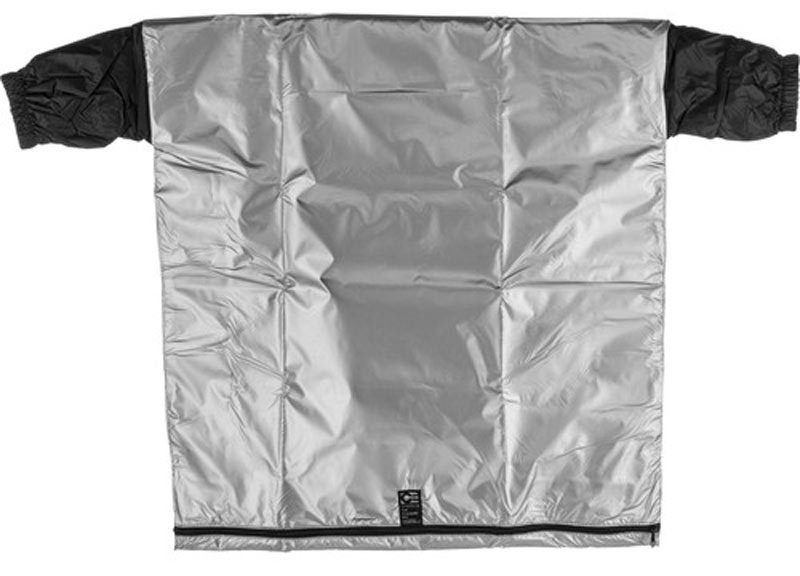
Up the scale, the Harrison film changing bags come sporting some nice features but at a steep premium. Like the Harrison tents, the company changing bags sport reflective silver fabric on the outside that keeps heat out and interior cool. If you often find youself working under bright sunlight, this might make your life a little easier.
Important: All manufacturers recommend testing the light-tightness of any new film changing bag you purchase. You can do this by setting up the bag in a dark room and placing a strong flashlight inside. Zip it up, put your hands in and methodically check all seams for light leaks.
What are film changing bag alternatives?
Bag vs Darkroom
Useful as it may be, a darkroom bag is no substitute for a proper darkroom. Ideally, you will have access to both as the two complement each other to give you complete freedom. However, if you are just starting out, a bag will let you do your developing even without access to a darkroom. It’s a perfect solution if you have to share fascilities, for example in a college dorm or a shared house.
Further down the line, a bag is a convenient tool even if you do have a darkroom. It’s especially useful when you darkroom is not a permanent setup. If you have to blackout the family bathroom every time you need a dark spot, a changing bag can save you a lot of trouble.
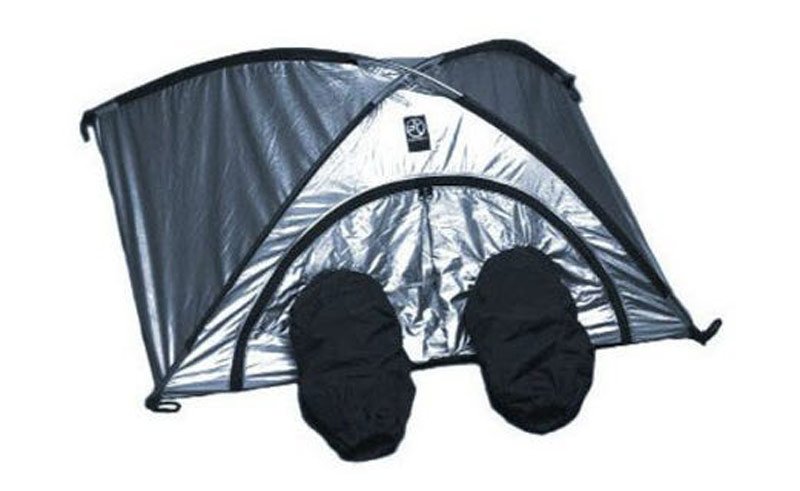
Bag vs Tent
A film changing tent is simply a bag with support structure to keep the fabric off your hands and give you more working space. A tent would usually provide a more comfortable experience, but at an increased cost and bulk. This may be advantageous in some situations, but impractial in others.
Tents are preferred by motion picture loaders, especially when working in fast paced productions. The extra space makes the delicate task of threading film stock through the magazine mechanisms easier and faster. The increased cost and bulk of the changing tents are generally inconsequential in a motion picture production environment.
Some film changing tents’ support structures can be removed, and what’s left is essentially a bulkier changing bag. This may make the tent easier to pack and transport, regaining some of the advantages of a bag. On the other hand, you can improvise and put an open side box inside a changing bag to simulate a tent.
It all comes down to personal preference and your particular needs. Whether the additional comfort that the tent provides is worth the extra cost, weight and bulk is a personal decision.
Bag vs Box
Film changing boxes are a specific tool most often found in professional film processing labs. It is essentially a rigid version of a film changing tent. Changing boxes are commonly used by wet plate photographers, as the rigid structure of the device makes working with liquid chemicals and delicate plates easier and safer. A changing box is not easily transportable, and is best used as a stationary solution.

